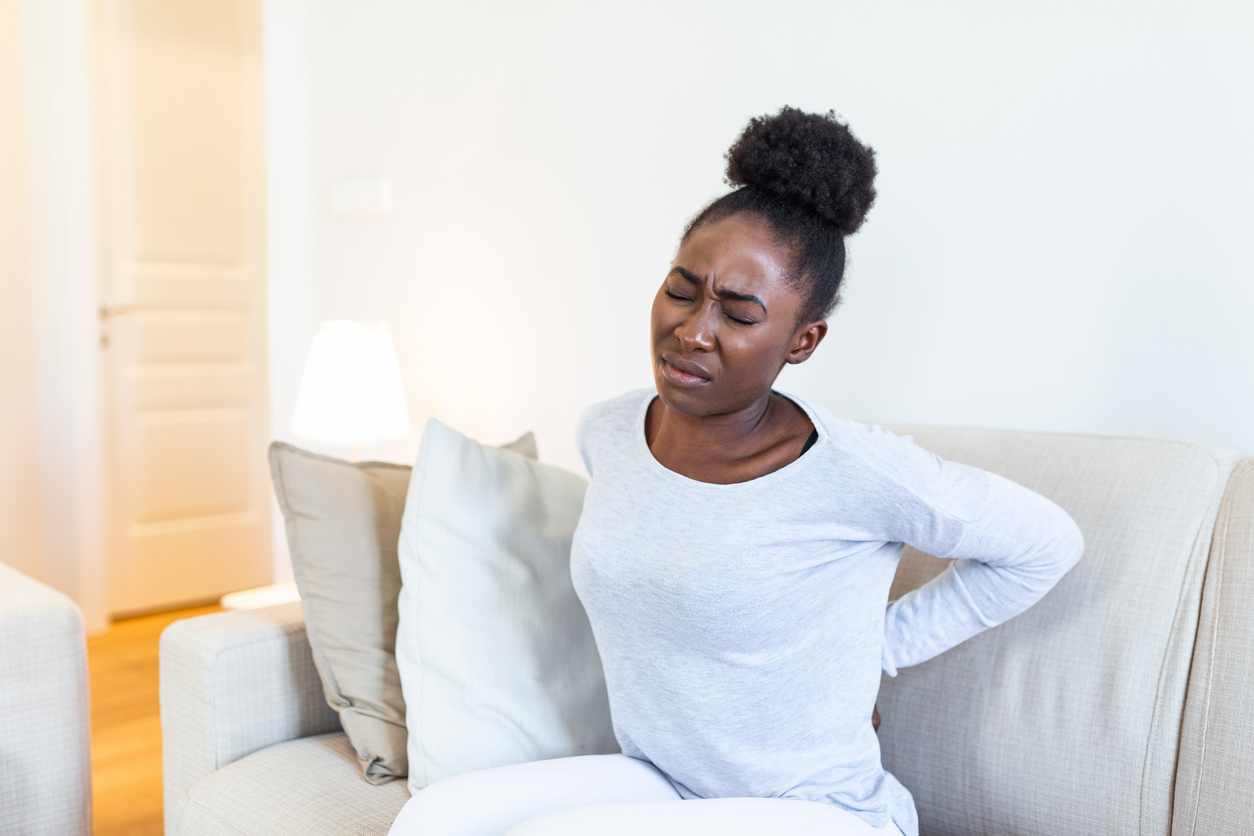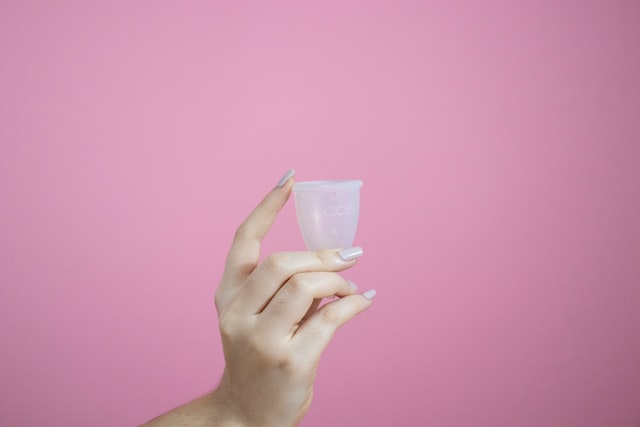Lower back pain sometimes comes on quite suddenly, so it can be worrying. In most cases, it isn’t serious – it’s a common result of overusing the muscles in your back. But,if your lower back pain is ongoing, came on suddenly or feels really bad, you may want to speak to a doctor.
Sometimes, sharp lower back pain can be a sign of a condition that needs prompt medical attention Here are 5 possible causes of sharp lower back pain, the common symptoms of each and when to seek medical help.
Non-specific low back pain
This is one of the most common causes of lower back pain. It can come on quite suddenly, and it’s often difficult to pinpoint why. Light injuries are thought to be a common trigger – you may have strained a muscle by lifting a heavy object, bending or twisting.
If you notice you’re getting lower back pain frequently, it’s worth looking at your posture. Generally, it’s a good idea to make sure your spine is not too bent or twisted. If you tend to slouch in your chair, this can increase tension in your muscles and lead to pain over time.
Usually, this sort of lower back pain goes away on its own, and you won’t need to see a doctor unless it goes on for more than 4 to 6 weeks. There are a few things you can try at home to help, such as:
- applying heat or ice packs to your back
- keeping active – by walking, for example
- doing gentle stretching exercises
- taking painkillers – see a pharmacist or doctor to check what’s suitable for you
Sciatica
Sciatica is pain caused when the sciatic nerve is irritated or compressed. The sciatic nerve is the largest nerve in the body, and it runs from your lower back and down into your legs – so it’s not surprising that sciatica can be very painful.
If you have sciatica, you may feel the following in your bottom, the back of your leg and your foot:
- pain – like a burning, stabbing or shooting sensation
- tingling – like pins and needles
- numbness
- weakness
If you have lower back pain without the above symptoms, you probably don’t have sciatica.
Sciatica usually gets better in 4 to 6 weeks, but it can last longer. In the meantime, you should try to avoid sitting or lying down for long periods.
Also try the following to help relieve pain and speed up your recovery:
- stick to your normal routine as much as you can
- do some exercises for sciatica
- take regular gentle exercise, such as walking
- apply cold or heat (like ice packs or heat patches) to painful areas. But avoid hot water bottles, as you could burn yourself if you have any numbness
- if you sleep on your side, put a small, firm cushion between your knees for support
- if you sleep on your back, put pillows under your knees for extra support
- take simple painkillers to reduce pain and inflammation (speak to your pharmacist or doctor for advice on how to safely get and use these medicines)
Speak to your doctor if your symptoms haven’t improved after a few weeks, are getting worse, or are stopping you from following your normal routine.

Slipped disc
The length of the spine is made up of small bones (vertebrae), and between these bones lie shock-absorbing discs filled with a soft, jelly-like substance. These discs cushion your spine as you move. Sometimes, one of the discs tears (ruptures) or bulges, and presses on the surrounding nerves – this is a slipped disc, also known as a prolapsed or herniated disc. A slipped disc in the lower back can cause intense pain and you might also get sciatica.
Your doctor will usually be able to diagnose a slipped disc from your symptoms, medical history and a physical examination. In most cases, symptoms settle down within a few weeks, as the slipped disc shrinks on its own. But, sometimes, you may need imaging tests, such as a CT or MRI scan. This may be to rule out other conditions or look at the position of the slipped disc, if your symptoms aren’t improving. In severe cases, you may need surgery to remove part of the disc.
If you’ve been diagnosed with a slipped disc and your doctor is happy for you to treat it at home, you could try the following to relieve your pain:
- apply a cold pack or a heat pack to your back
- painkillers, such as ibuprofen – speak to your pharmacist or doctor for further guidance on how to safely get and use these medicines
- if you sleep on your side, put a small cushion between your legs for extra support
- if you sleep on your back, put pillows beneath your knees
Kidney stones
Sometimes,waste products in the blood can build up and form small stones in the kidneys, which can then travel down your urinary tract. Kidney stonescan cause pain, and can also block the flow of pee if they get stuck in the tube connecting the kidney to the bladder (ureter).
Some kidney stones cause no symptoms, but you may have:
- a strong pain in your lower back, which can also go round to your tummy and groin
- blood in your pee
- a burning or sharp pain when peeing
- the need to pee more than usual
- feeling sick or being sick
If you think you may have a kidney stone, you should see your doctor. They may take a urine sample to check for blood, and may also use a CT scan to find the stone and see if it’s creating a blockage.
Your doctor will usually recommend the best way to treat your kidney stones – treatment varies depending on if the stone is creating a blockage or an infection. Small stones will often pass on their own (in your pee), but larger stones sometimes need to be removed by a doctor.
Shingles
Shingles, also known as herpes zoster, is an infection that’s caused by a virus. The first symptom is often a painful burning or tingling feeling in an area of the skin, like around the lower back.
It’s common to develop a blistering rash, which often appears in a band that affects just one side of your body. The rash may appear a couple of days after you first feel pain.
If you think you have shingles, it’s important to speak to a doctor, as you may need medicine to help your recovery and prevent long-term problems.
The rash tends to last for up to 4 weeks, but you may feel pain in the skin for several weeks after this. To help ease the pain, try wearing loose clothes, using a cool compress and taking simple painkillers like paracetamol (speak to your pharmacist or doctor for further guidance).
People can’t catch shingles, but because it’s caused by the same virus as chickenpox, it can spread chickenpox to people who haven’t had it. For this reason, you should avoid contact with these groups of people if you suspect you have shingles:
- pregnant women who haven’t had chickenpox
- people with a weak immune system, for example those having chemotherapy
- babies less than 1 month old – unless you’re their mother, in which case they should be protected by your immune system

When should you see a doctor for lower back pain?
There are a few things that you should look out for if you have sharp lower back pain. See a doctor immediately if you have:
- difficulty peeing
- a temperature above 38°C
- trouble controlling when you poo and pee
- tingling or numbness over your genitals or bottom
- weakness in your legs
- unexpected weight loss
- a lump in your back
You should also see a doctor if your pain doesn’t go away after a few days of rest, or seems to be worse at night.
Key points
- sharp lower back pain is often non-specific, but it’s sometimes due to sciatica or a slipped disc
- occasionally, lower back pain is caused by other conditions, such as kidney stones or shingles
- in many cases, you can try managing the pain at home, but it’s a good idea to see a doctor if it doesn’t go away after resting
- seek immediate medical attention if you have a high fever, difficulty controlling when you poo or pee, and weakness in your legs






